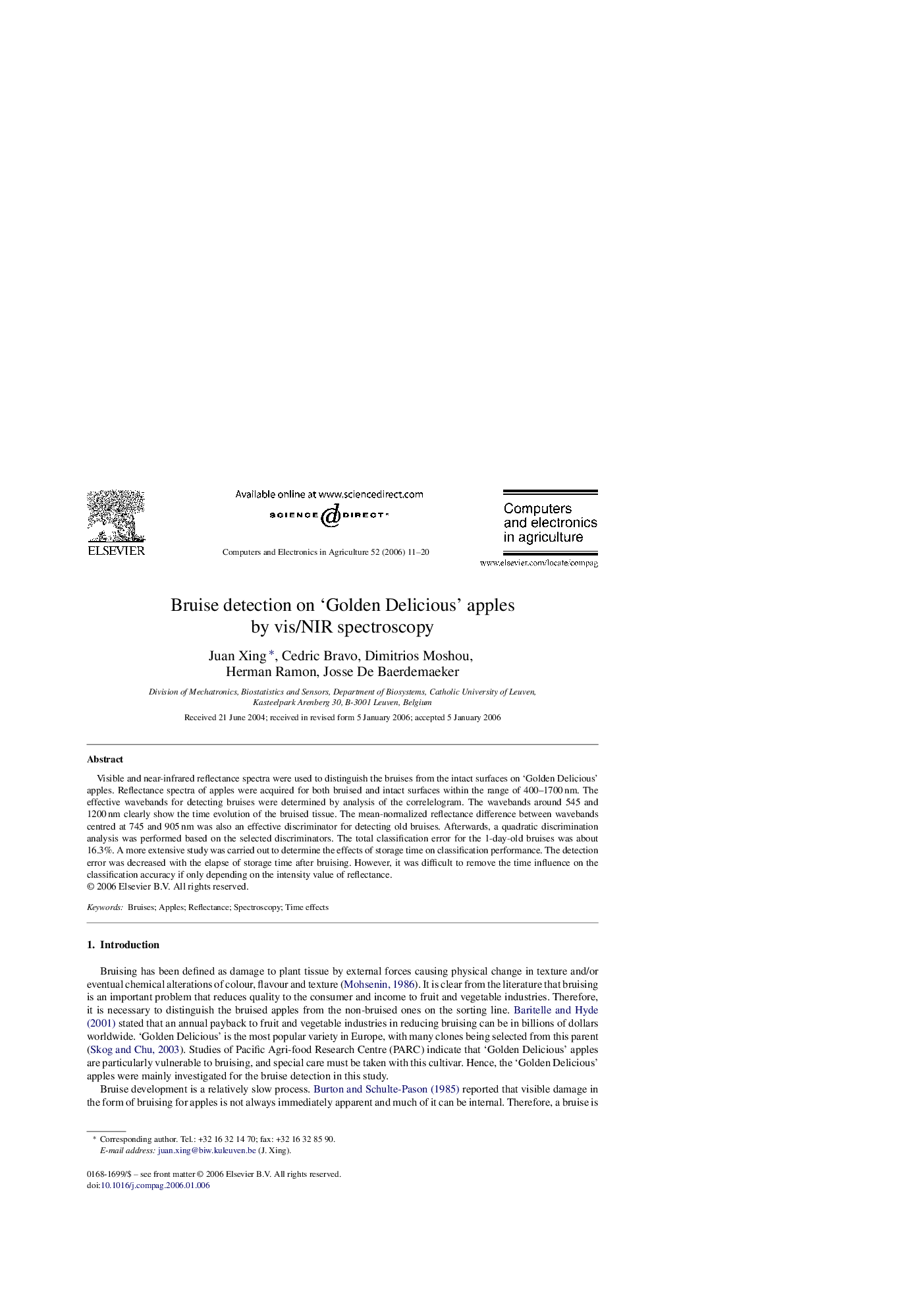| Article ID | Journal | Published Year | Pages | File Type |
|---|---|---|---|---|
| 85472 | Computers and Electronics in Agriculture | 2006 | 10 Pages |
Visible and near-infrared reflectance spectra were used to distinguish the bruises from the intact surfaces on ‘Golden Delicious’ apples. Reflectance spectra of apples were acquired for both bruised and intact surfaces within the range of 400–1700 nm. The effective wavebands for detecting bruises were determined by analysis of the correlelogram. The wavebands around 545 and 1200 nm clearly show the time evolution of the bruised tissue. The mean-normalized reflectance difference between wavebands centred at 745 and 905 nm was also an effective discriminator for detecting old bruises. Afterwards, a quadratic discrimination analysis was performed based on the selected discriminators. The total classification error for the 1-day-old bruises was about 16.3%. A more extensive study was carried out to determine the effects of storage time on classification performance. The detection error was decreased with the elapse of storage time after bruising. However, it was difficult to remove the time influence on the classification accuracy if only depending on the intensity value of reflectance.
